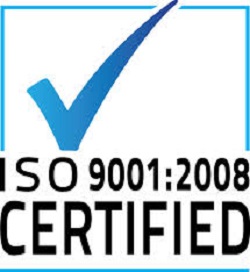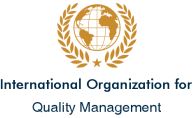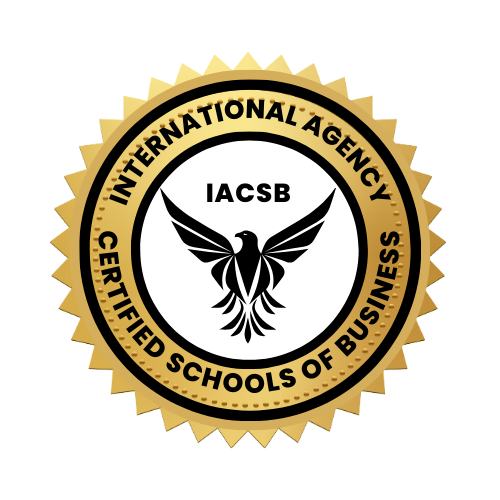


SEC rules require funds to disclose both shareholder fees and operating expenses in a "fee table" near the front of a fund's prospectus. The lists below will help you decode the fee table and understand the various fees a fund may impose: Shareholder Fees
Annual Fund Operating Expenses
|
| |||||||||||||||||||||||||||||||||||||||||||||||||||||||||||||||||||||||||||||||||
USA - Asia - Russia - India - EU - West Indies - China - Indonesia - Latin America - Arabia - Africa
Best Online University - Online Nursing Degrees Home Home ACBSP About About AABFS CFM Chartered Financial Manager Requirements Certifications Board Course Certifications Benefits Online Certification Convert Courses To Certification Recognition Qualifying Degrees Training Providers How To Use CEO Message Register Accreditations IAF CERT EU Accreditation Handbook Mission Contact Us News Certified Data Analyst Wealth Management Sample Test Quiz PSA ERM Article Application Apply Global Advisors instructions AAMBFS Old Online Certification FINTECH CAIFP Certified Artificial Intelligence in Finance Professional ™ CHFM CHARTERED FINANCIAL MANAGER Dubai UAE INFORMA Training 2019 Events In House Training Speakers About Old Chartered Wealth Manager News Sri Lanka & The Maldives Ethics CWM Training Program Magazine of Wall Street CWM Chartered Wealth Manager Cert Brazil UBT AMA Reg. Payments Registration NewMembers IP payment Corporate Discount payments HomeCoPY Paper Award Home George Mentz Colorado Springs CEO GAFM - Global Academy of Finance & Management charteredwealthmanager Ghana AFAPayment AFAPPC GetCertifiedPPC GetCertifiedPPC2 Stock Markets Training Calendar FINRA MFP Financial Planner AFA Chartered Certified Economist Certified Financial Analyst FINRA SEC Chartered Wealth Manager Training Verify Member indonesia malaysia Guides Informa GAFM Guides Jamaica Membership Governmental Recognition Links Financial Planner Program Chartered Economist CCO Higher Institute IP List Be a Training Provider Management Consulting Jobs Project Management Certifications CWM Chartered Wealth Manager Terms Deans Letter AFA Approved Masters Degrees Economics Certification Economics Degrees Management Degrees Finance Degrees Accounting Degrees Exams Renew Certification Continuing Ed Awards Letter Renew 2014 Sample Honor Society Trademarks Careers Government Jobs Complaint pics Mentz George Mentz Lawyer Mentz George Colorado USA Speaker Consultant AFA ® Accredited Financial Analyst Certification ChFM Chartered Financial Manager ® Accredited CTEP ® Trust and Estate Certification CIPM ® Certified International Project Manager CWM ® Chartered Wealth Manager ® AMA ® Management Accountant Certification AMC ® Management Consulting Certification MMC ® Management Consulting Certification Book Chartered Fraud Investigator Journal Reference to FINRA Certification Guide & Standards FINRA EDUCATION CWM Chartered Wealth Manager ® Chartered Financial Manager ® AFA Accredited Certified Financial Analyst ® AMA Accredited Certified Management Accountant ® CAM Chartered Asset Manager CTEP Chartered Trust and Estate Planner ® RFS Registered Financial Specialist CMA Chartered Market Analyst FAD Financial Analyst Designate CPM Chartered Portfolio Manager - IACSB * Chartered Financial Manager FINRA * Certified Risk Analyst FINRA * MFP Master Financial Planner ® - Aspen Commission
All Rights Reserved 1996-2025 - GAFM Global Academy of Finance and Management &
Association for Finance and Management
Mentzinger Media LLC Board of
Standards - Accreditation and Certification - Global Certified
Accountants Financial Analysts Institute
Association of International Financial Accounting Foregin Relations
Public Policy Council Chartered
Wealth Manager
Accredited Financial Analyst Certified Chartered Management
Accountant - Association Institute Academy
US Department of
Labor - George Mentz -
George Mentz Trump -
Commissioner George Mentz
Join us on
LinkedIn - Financial Analyst
Training - Chartered
Wealth Manager ® - ChE
Chartered Economist ® - IACSB - CHEQS
Certified Financial Analyst * Management
Consultant Certification * Certified Project Manager *
Chartered Wealth
Manager
In alliance with the Unincorported Non-Profit Association of Finance and
Management USA
Legal Notice: The GAFM International Board of Standards and Academy have existing mutual trademarks agreements with the CFP Certified Financial Planner Board, The IMA Institute of Management Accountants, and the CFA Chartered Financial Analyst Institute formerly known as the AIMR association.
A financial analyst securities analyst, research analyst, equity
analyst, or investment analyst is a person who performs financial analysis for external or internal clients
as a core part of the job. Financial analysis (also referred to as financial statement analysis or
accounting analysis or Analysis of finance) refers to an assessment of the viability, stability and
profitability of a business, sub-business or project. It is performed by professionals who prepare reports
using ratios that make use of information taken from financial statements and other reports. These reports
are usually presented to top management as one of their bases in making business decisions. Certification
as a financial analyst requires accredited education in finance
Management consulting is the practice of helping organizations to improve
their performance, primarily through the analysis of existing organizational problems and development of
plans for improvement. Organizations may draw upon the services of management consultants for a number of
reasons, including gaining external (and presumably objective) advice and access to the consultants'
specialized expertise. Becoming certified in management consulting requires proper education experience and
credentials.
Management accounting or managerial accounting is concerned with the
provisions and use of accounting information to managers within organizations, to provide them with the
basis to make informed business decisions that will allow them to be better equipped in their management
and control functions. Cost accounting is a process of collecting, analyzing, summarizing and evaluating
various alternative courses of action. Its goal is to advise the management on the most appropriate course
of action based on the cost efficiency and capability. Cost accounting provides the detailed cost
information that management needs to control current operations and plan for the future. Certification in
management or cost accounting requires education and expertise in accounting.
Accreditation Bodies: www.GAFM.com *
www.GAFM.org * www.CertifiedProjectManager.eu * www.AAFM.org * www.CertifiedProjectManager.org *
www.icecc.com * www.RoyalLawSociety.com * www.RoyalBusinessSociety.com * www.RoyalBusinessCollege.com * www.RoyalFellows.com * www.RoyalEconomicsAcademy.com * www.OxfordLawSchool.com * www.RoyalManagementSociety.com *
CWM Chartered Wealth Manager ® AFA Accredited Financial Analyst ® AMA Accredited Management Accountant ® CAM Chartered Asset Manager CTEP Chartered Trust and Estate Planner ® RFS Registered Financial Specialist CMA Chartered Market AnalystFAD Financial Analyst Designate CPM Chartered Portfolio Manager MFP Master Financial Planner ® | ||||||||||||||||||||||||||||||||||||||||||||||||||||||||||||||||||||||||||||||||||










